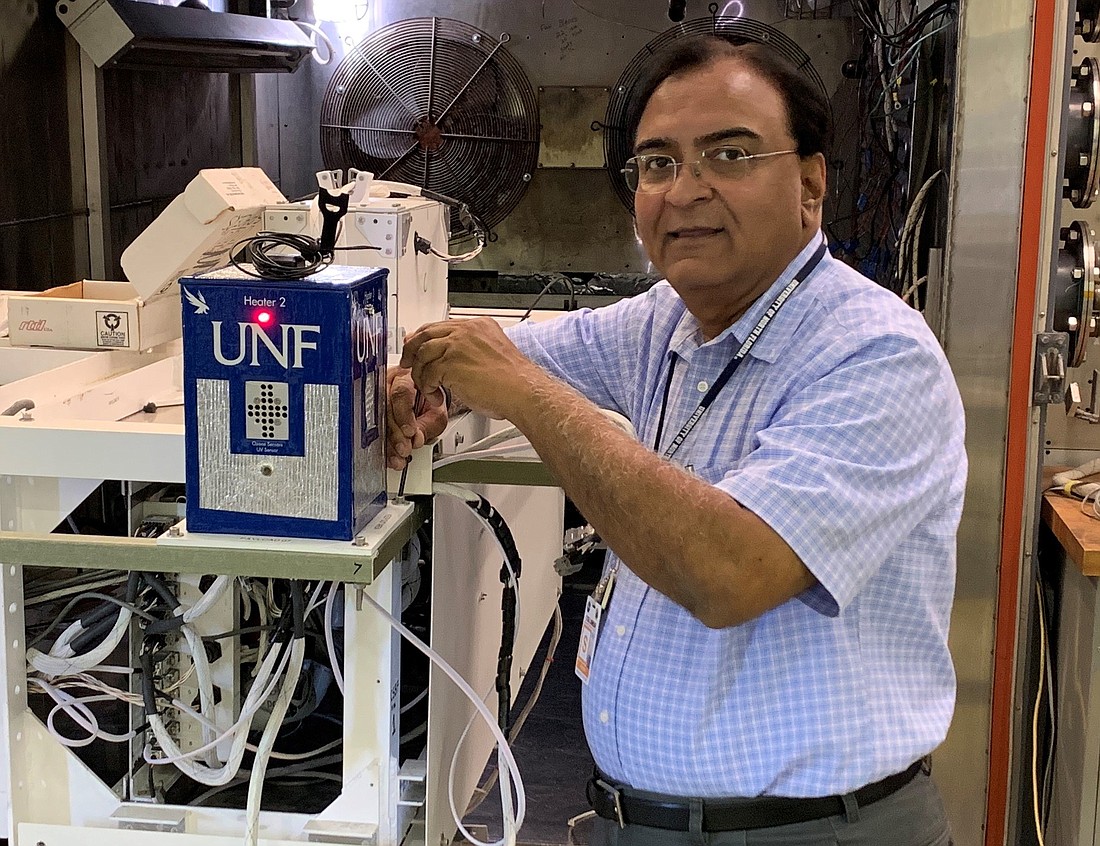
Nirmalkumar Patel, a University of North Florida physics associate lecturer, received a U.S. Patent for his sensor invention that detects toxic vapors and odors in hazardous gases, industrial toxic gases and other chemical agents.
His patent on “Nanocrystalline Indium Tin Oxide Sensors and Associated Method of Use” solves issues with detection of low-level concentration of toxic gas in real time and operating at room temperature, states a news release from the university.
Patel and a team of student researchers developed nanocrystalline gas sensors and arrays to detect and measure minute concentrations of industrial toxic gases and hazardous chemicals. The sensors can operate at room temperature as well as in low-pressure conditions.
The patent is a continuation of a previous UNF patent on similar thin film gas and odor sensors. Those sensors and arrays have been tested with various hazardous gases and explosive materials at federal facilities including NASA’s Kennedy Space Center.
Patel also holds a related patent on quartz crystal microbalance with nanocrystalline oxide semiconductor thin films as well as a patent on a biosensor that detects lactic acid.
His next projects focus on developing wearable sensors on flexible substrate, gas sensor transistors, ozone sensors for space applications and odor sensors for early detection of infection and cancer.
Patel has conducted research and taught at UNF since 2001. He has a doctorate in experimental solid state physics from Sardar Patel University in India.
His research focus is mainly on thin films. Patel and his students measure electrical properties of semiconductor thin film gas sensors and structural properties using a scanning electron microscope.